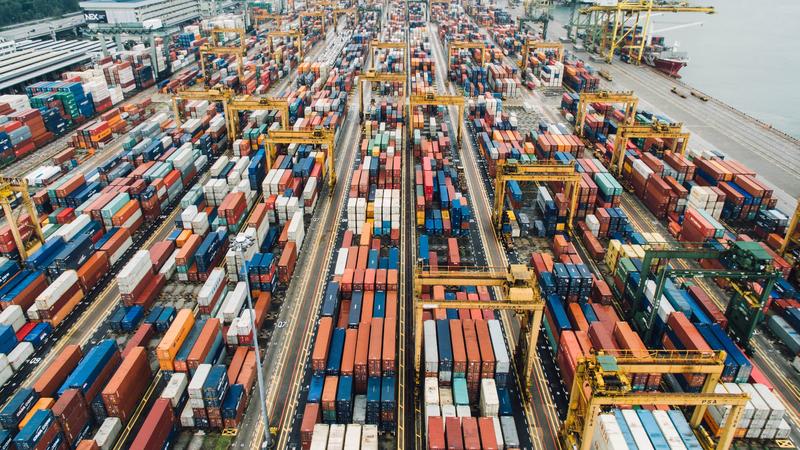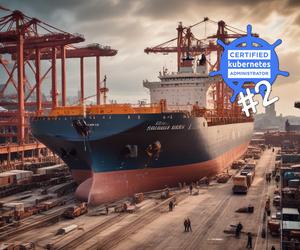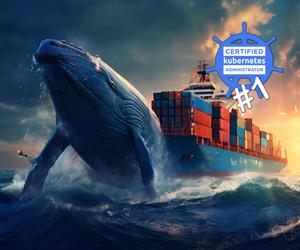
Towards DevOps Excellence: Explore Docker Update Automation
In the DevOps ecosystem, containerizing applications with Docker has become a common practice. Indeed, Docker images provide a convenient solution for packaging applications and dependencies, enabling quick and easy deployment. However, keeping these images up to date can be a significant challenge, especially when managing a large number of images and ensuring the absence of vulnerabilities.
In this article, we will explore how to automate Docker image updates by leveraging DevOps practices to streamline and secure this essential process.
Manual Management of Updates
Manual management of Docker image updates can lead to various challenges, security risks, and impacts on the efficiency and reliability of an application. Let’s examine the different issues posed by manual management of these updates.
Challenges of Manual Management
Manual management of Docker image updates can become complex and tedious, especially when dealing with a large number of images and their dependencies. Manual tasks such as searching, downloading, and implementing updates can be time-consuming and require significant effort. Moreover, human errors can easily occur during this process, resulting in inconsistencies or incompatibilities between different versions of images.
Security Risks Associated with Failure to Update Images
The initial reaction may be to postpone this topic for later. However, it is crucial to be aware that failing to regularly update Docker images exposes applications to security risks. Outdated images may contain known vulnerabilities that can be exploited by attackers. Every day, new security vulnerabilities are discovered, and it is highly likely that your containerized application is affected by at least one of these vulnerabilities every month. Therefore, not updating your images exposes you to risks such as confidentiality breaches, injection attacks, denial of service, etc. It is essential to keep your images up to date to ensure a minimum level of security.
Impacts on Deployment Efficiency and Reliability
Manual management of Docker image updates can have a negative impact on deployment efficiency and reliability. Delays in updating images can lead to compatibility issues with new versions of applications or their dependencies, resulting in errors or malfunctions during deployments. Additionally, in cases where urgent deployment is required, manual management can slow down the overall process and cause delays in the production release of new features or fixes.
Therefore, it is essential to adopt automated approaches and integrate DevOps practices (specifically DevSecOps in this case) to simplify and secure the update of your Docker images.
Automation of Updates
Automating Docker image updates provides an efficient solution to simplify and secure the image management process. Let’s explore different aspects of automation in the context of DevOps.
Implementing CI/CD
Continuous Integration (CI) and Continuous Deployment (CD) are key practices in DevOps. They enable extensive automation of the development and deployment process. By integrating Docker image updates into CI/CD pipelines, you can automate the building, testing, and deployment of security patches in your application images. This ensures a consistent and reproducible approach to image management throughout an application’s lifecycle.
Monitoring Updates and Vulnerabilities
It is equally crucial to monitor Docker image updates and associated vulnerabilities. Automated monitoring tools can be used to track official image sources, private registries, or security notifications. These tools can report on new available versions and security patches, enabling quick responsiveness for updates. By monitoring known vulnerabilities, you can also take proactive measures to minimize security risks by identifying and resolving vulnerabilities in the used images.
Other Measures to Take
Automating Docker image updates is just the beginning of a broader approach to implement. Here are some best practices that go hand in hand with CI/CD.
Using a Centralized Registry
Using a centralized registry for your Docker images facilitates the management and distribution of updated images. You can configure a private registry, such as Docker Hub, or deploy your own internal registry.
By centralizing the images, you can ensure consistency in the versions used across different deployment environments. Additionally, a centralized registry makes it easier to access, search, and manage images, which is essential when it comes to keeping images up to date.
Integration of Vulnerability Analysis Tools
It is crucial to integrate vulnerability analysis tools into your CI/CD pipeline to identify and resolve potential security issues.
These tools perform automated analysis of Docker images, identifying known vulnerabilities in the application code, dependencies, and system components used. By integrating these tools, you receive detailed reports on faulty implementations, potential attack sources, detected vulnerabilities, as well as resolution guidance and version numbers of fixed dependencies.
This allows you to have a clear overview and take appropriate measures to apply patches.
Regular Update Scheduling
Regular and automatic Docker image updates can be executed feasibly. You can define deployment strategies, such as progressive deployments or parallel updates, to minimize service disruptions.
Automated Testing
Automated testing plays a crucial role in validating a Docker image update.
It allows you to verify the compatibility, stability, and performance of the application deployed on the new version of an image or application dependencies. Tests can include integration testing, load testing, and security testing to ensure that updates do not cause regressions or unexpected issues. They ensure the quality of deployments and help detect potential problems before they affect end users.
In conclusion, automating Docker image updates relies on these best practices. By implementing them, you can ensure efficient, secure, and reliable management of image updates in your DevOps environment. This will improve security, reduce human errors, optimize deployments, and increase application availability. Automating Docker image updates is an essential element in maintaining an up-to-date, safe, and scalable development and deployment environment.
Reliable External Sources
When using external sources, such as public registries or third-party repositories, it is essential to establish control and validation mechanisms:
- Regularly verify the authenticity and integrity of image sources to avoid security issues or compromised images.
- Use verification mechanisms such as key fingerprints or digital signatures to ensure the origin and integrity of downloaded images.
- Also, ensure compliance with your organization’s security policies when using external sources.
Rollback and Previous Versions
Although these automated mechanisms ensure reproducibility, it is important to have rollback mechanisms in place for reverting to a previous version. Sometimes, an update may cause compatibility issues or malfunctions that were not detected during testing.
By having rollback strategies in place, you can revert to a previous version of your application image, minimizing service disruptions. Additionally, it may be useful to retain previous versions of images for a certain period for testing, auditing, or compatibility with other system components.
By considering these additional considerations, you can strengthen and enhance your Docker image update process. By combining these practices with the previously mentioned best practices, you will be able to establish an efficient, secure, and reliable automatic image update process.
Conclusion
Automatic Docker image updates have become an essential practice in DevOps environments. It offers numerous benefits, such as maintaining security, reducing human errors, and optimizing deployments.
However, it requires the adoption of several DevOps practices, such as using a centralized image registry, integrating vulnerability analysis tools, scheduling and executing updates with CI/CD pipelines, as well as implementing automated testing.
Securing applications is a crucial topic that has been neglected for too long. Securing the deployment process offers other advantages, such as greater maintainability and compatibility of applications within the IT infrastructure. It is a significant undertaking that is better to start before being caught off guard.




